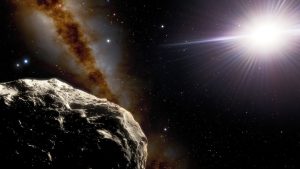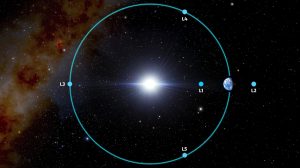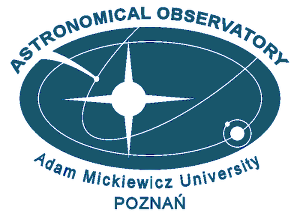The SOAR telescope, part of the Cerro Tololo Observatory in Chile (Cerro Tololo Inter-American Observatory – CTIO), helped astronomers confirm the existence of Earth’s second Trojan asteroid and determine its exact orbit. Based on the observations, it was found that the asteroid 2020 XL5 is about 1 km in diameter – which is about three times the size of the first discovered Trojan of the Earth, and that its surface is very dark.

Credit: CTIO/NOIRLab/NSF/AURA/J. da Silva/Spaceengine
Using the 4.1m SOAR telescope on Cerro Pachon in Chile, astronomers led by Dr Toni Santan-Ros of the University of Alicante and the University of Barcelona’s Institute of Space Sciences observed the recently discovered asteroid 2020 XL5 to determine its orbit and size . The results confirm that 2020 XL5 is an Earth Trojan – an Earth companion asteroid that orbits the Sun in the same orbit as our planet – and that it is the largest Earth Trojan found so far.
In the Solar System, Jupiter’s Trojan asteroids are best known, but 2020 XL5 is Earth’s second known Trojan [2]. Trojans are objects that share an orbit with our planet, and are clustered around one of two special gravity-balanced regions along the Earth’s orbit known as Lagrange points [1].
The 2020 XL5 observations were also made with the 4.3-meter Discovery Channel Telescope at the Lowell Observatory in Arizona (USA) and the 1st telescope belonging to the European Space Agency in Tenerife, Canary Islands.
Discovered on December 12, 2020 by the Pan-STARRS1 telescope (used to monitor the sky) in Hawaii – 2020 XL5 is much larger than the first Earth Trojan discovered in 2010, called 2010 TK7. Scientists have found that the 2020 XL5 is about 1.2 kilometers in diameter, about three times the size of the first (TK7 2010 is estimated to be less than 400 meters in diameter).
When 2020 XL5 was discovered in 2020, its orbit around the Sun was not well-determined to decide if it was merely an asteroid approaching the Earth and crossing its orbit, or whether it was indeed an Earth Trojan.

To improve the orbit of this object, Dr. Toni Santana-Ros’s team searched for the 2020 XL5 observations in archival images from 2012-2019 taken as part of the dark energy search program using a special camera (DECam) on the 4.1-meter SOAR telescope at CTIO in Chile. With data spanning nearly 10 years, the team was able to significantly improve our understanding of the orbit of this object.
Although other studies have already suggested that we are dealing with a Trojan asteroid [3], only new results have finally confirmed it and provided estimates of the size of 2020 XL5 and allowed for the estimation of the taxonomic type (i.e. the approximate mineralogical composition of the surface) of this asteroid.
“The data from SOAR allowed us to conduct the first photometric analysis of the object, revealing that 2020XL5 is probably a C-type asteroid larger than one kilometer in size,” says Dr. Toni Santana-Ros.
Asteroids of C-type are rich in carbon and are the second most common type of asteroids in the solar system. Some of them have been associated with primitive meteorites containing water, some with interplanetary dust particles, and some have no analogues among the meteorite collections on Earth, which means that we do not know their exact mineralogical composition “adds Dr. Dagmara Oszkiewicz from the AMU Astronomical Observatory Institute, a co-author of the article published today in Nature Communications.
The findings also showed that the 2020 XL5 asteroid will not remain a Trojan asteroid forever. It will remain stable in its position for at least another 4,000 years, but will eventually get disrupted by gravity and flee to wander further through space.
The 2020 XL5 and 2010 TK7 may not be the only Trojans of Earth – there may be many more such bodies, but so far they have not been detected because they appear very close to the Sun in the sky. This means that the search and observation of the Trojans of Earth must be performed during dusk or dawn (i.e. just after sunset or just before sunrise), with the telescope aimed at the area of the sky near the horizon, when the light from the observed object must travel through the thickest part of the atmosphere. Such observations are very difficult, and the observation conditions are additionally deteriorated by the bright background of the sky. The SOAR telescope was able to observe only 16 degrees above the horizon, while many 4-meter (and larger) telescopes are not able to aim that low [4].
Nevertheless, the reward for discovering Earth Trojans is well worth the effort to find them. As these studies have shown, they may contain primitive material that dates back to the birth of the Solar System and may represent some of the components of our planet, and are therefore attractive targets for future space missions.
It is important to discover more terrestrial Trojans, especially those with low orbital inclinations, as they may be easier to reach than the Moon. Thus, they can become an ideal base for advanced exploration of the Solar System, and even be a potential source of resources.
[1] Lagrange points are gravitationally balanced regions around two massive bodies such as the Sun and a planet. The Earth-Sun system has five Lagrange points: L1 is between the Earth and the sun; L2 is on the opposite side of the Earth from the Sun; L3 is on the opposite side of the Sun to Earth; and L4 and L5 lie along the Earth’s orbit, one 60 degrees ahead of our planet along its orbit, and the other 60 degrees behind it. (This picture shows their positions.) Trojan asteroids are located at points L4 and L5. The two Earth Trojans found so far are at L4. [2] Jupiter has over 5,000 known Trojans, and a NASA space mission called Lucy recently launched to study them. Venus, Mars, Uranus, and Neptune are also known to possess trojan asteroids. [3] Man-To Hui (Macau University of Science and Technology) and his colleagues published observations confirming the Trojan nature of 2020 XL5 in the Astrophysical Journal Letters in December 2021. [4] Such observations are increasingly negatively affected by the growing number of satellite constellations (such as Starlink)
This research is presented in an article entitled “Orbital Stability Analysis and Photometric Characterization of the 2020 XL5 Earth’s Second Trojan” published February 1, 2022 in Nature Communications.
(Orbital stability analysis and photometric characterization of the second Earth Trojan asteroid 2020 XL5, T. Santana-Ros et al.)
The science team consists of: T. Santana-Ros (Departamento de Fisica, Ingeniería de Sistemas y Teoría de la Señal, Universidad de Alicante; Institut de Ciències del Cosmos, Universitat de Barcelona), M. Micheli (ESA NEO Coordination Center), L Faggioli (ESA NEO Coordination Center), R. Cennamo (ESA NEO Coordination Center), M. Devogèle (Arecibo Observatory; University of Central Florida), A. Alvarez-Candal (Instituto de Astrofísica de Andalucía, CSIC; Instituto de Física Aplicada. a las Cwienas y las Tecnologías, Universidad de Alicante; Observatório Nacional / MCTIC), D. Oszkiewicz (Astronomical Observatory Institute, Faculty of Physics, Adam Mickiewicz University), O. Ramírez (Solenix Deutschland), P.-Y. Liu (Instituto de Física Aplicada a forest Cwienas y las Tecnologías, Universidad de Alicante), P.G. Benavidez (Departamento de Fisica, Ingeniería de Sistemas y Teoría de la Señal, Universidad de Alicante; Instituto de Física Aplicada and las Cwienas y las Tecnologías, Universidad de Alicante), A. Campo Bagatin (Departamento de Física, Ingeniería de Sistemas y Teor de Sistemas la Señal, Universidad de Alicante; Instituto de Física Aplicada and Cwienas y las Tecnologías, Universidad de Alicante), EJ Christensen (Lunar and Planetary Laboratory, University of Arizona,), RJ Wainscoat (Institute for Astronomy, University of Hawaii), R. Weryk (Department of Physics and Astronomy, University of Western Ontario), L. Fraga (Laboratório Nacional de Astrofísica LNA / MCTI), C. Briceño (Cerro Tololo Inter-American Observatory / NSF’s NOIRLab), and L. Conversi (ESA NEO Coordination Center; ESA ESRIN).
Southern Astrophysical Research (SOAR) Telescope is a joint project of Ministério da Ciência, Tecnologia e Inovações do Brasil (MCTIC / LNA), NOIRLab NSF, University of North Carolina at Chapel Hill (UNC) and Michigan State University (MSU).
This work is supported in part by the US Department of Energy’s Office of Science. The Dark Energy Survey is a collaboration of over 400 scientists from 26 institutions in seven countries.
2022-02-01, DO, AK

